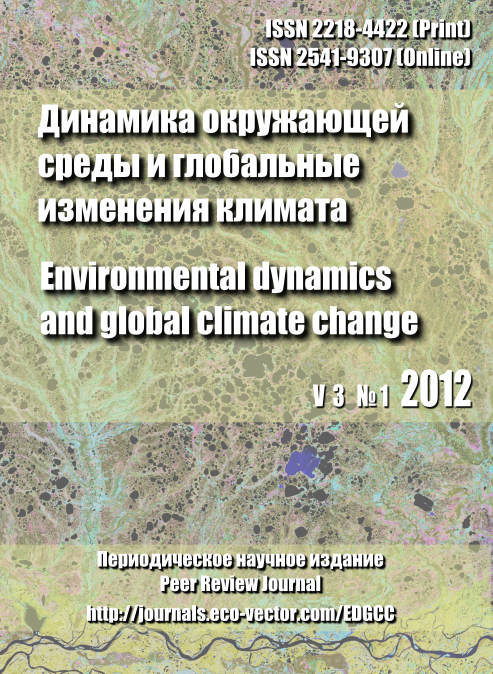Том 3, № 1 (2012)
- Год: 2012
- Выпуск опубликован: 15.01.2012
- Статей: 4
- URL: https://edgccjournal.org/EDGCC/issue/view/386
Статьи
Discomycetes from plant, leave and sphagnum litter in ombrotrophic bog (West Siberia)
Аннотация
 1-20
1-20


Новые находки редких и охраняемых видов макромицетов в Ханты-Мансийском округе
Аннотация
В работе приведены сведения о местах находок, экологии и категориях редкости (IUCN) 23 редких видов макромицетов, найденных на территории Ханты-Мансийского округа – Югры в ходе экспедиций по ведению Красной книги округа в период с 2005 по 2012 гг.
 1-6
1-6


Могут ли индексы цитирования помочь в оценке уровня диссертаций? (Опыт сравнительного анализа в экологии)
Аннотация
При помощи «Российского Индекса Научного Цитирования» и системы Google Scholar (с интерфейсом «Publish or Perish») проведен сравнительный анализ цитируемости работ ученых, защитивших в 2009-2010 гг. диссертации на соискание степени доктора биологических наук по специальности «Экология» (ДН), и группы исследователей факультета Почвоведения МГУ им. М.В. Ломоносова (КДН). Показано, что по всей совокупности использованных наукометрических показателей публикации этих групп специалистов не различаются, или наблюдается их небольшое преимущество лишь по некоторым показателям. Однако среди отдельных авторов эти показатели сильно варьируют. Количество ссылок на наиболее цитируемую статью для ДН составляет от 0 до 67, индекс Хирша варьирует от 0 до 8, среднее количество цитирований в год равно среднему количеству цитирований, приходящихся на 1 статью и составляет от 0 до 13.06. На приведенных примерах поясняются основные понятия современной наукометрии, обсуждается их значение и даются рекомендации. Для оценки эффективности научной работы предложен новый наукометрический параметр (Gl-index), равный отношению суммарного количества ссылок, полученных автором, к произведению среднего количества авторов в его публикациях на квадрат времени (в годах), прошедшего от момента опубликования им первой работы.
 1-12
1-12


Высокий уровень стояния воды может снижать эмиссию метана из почвы
Аннотация
 1-10
1-10











